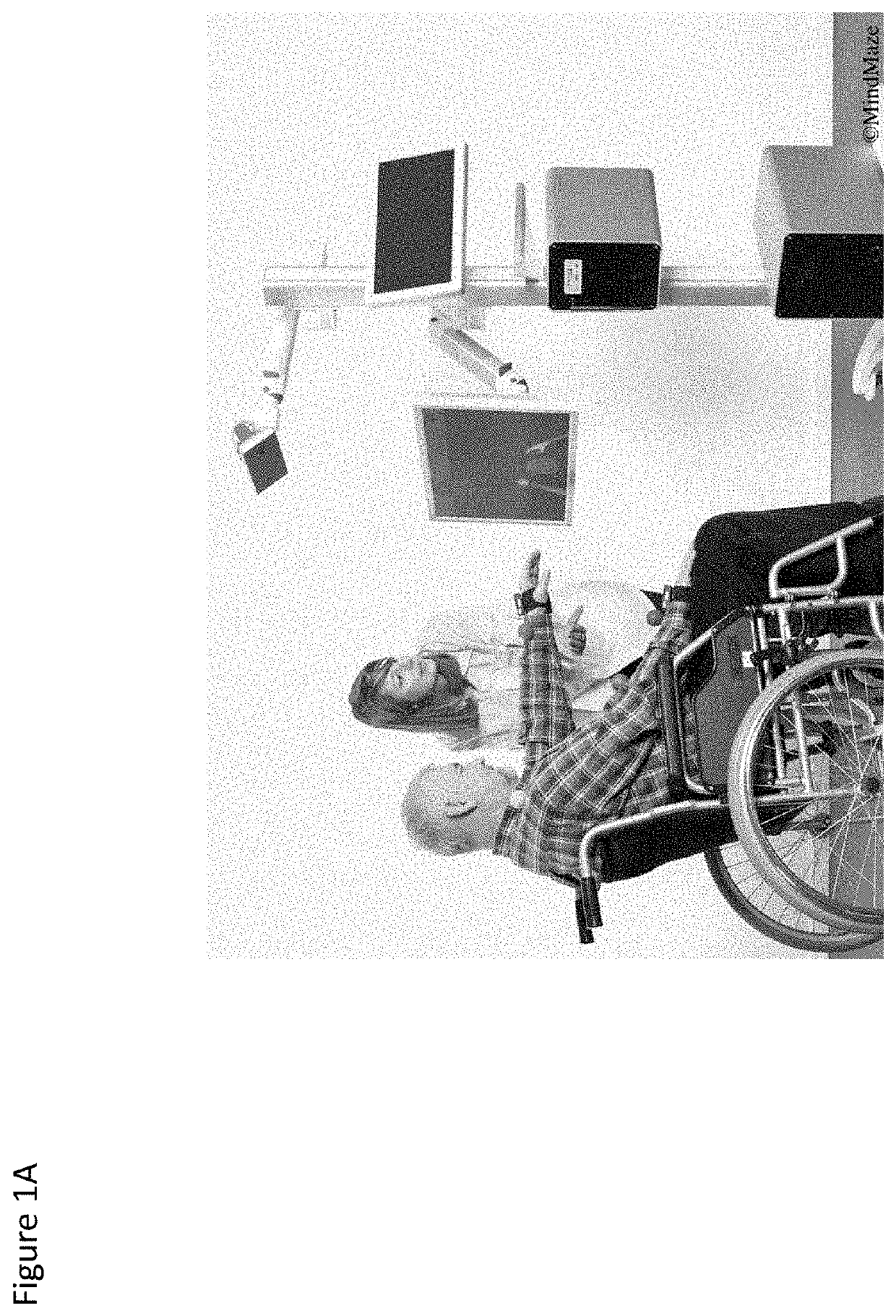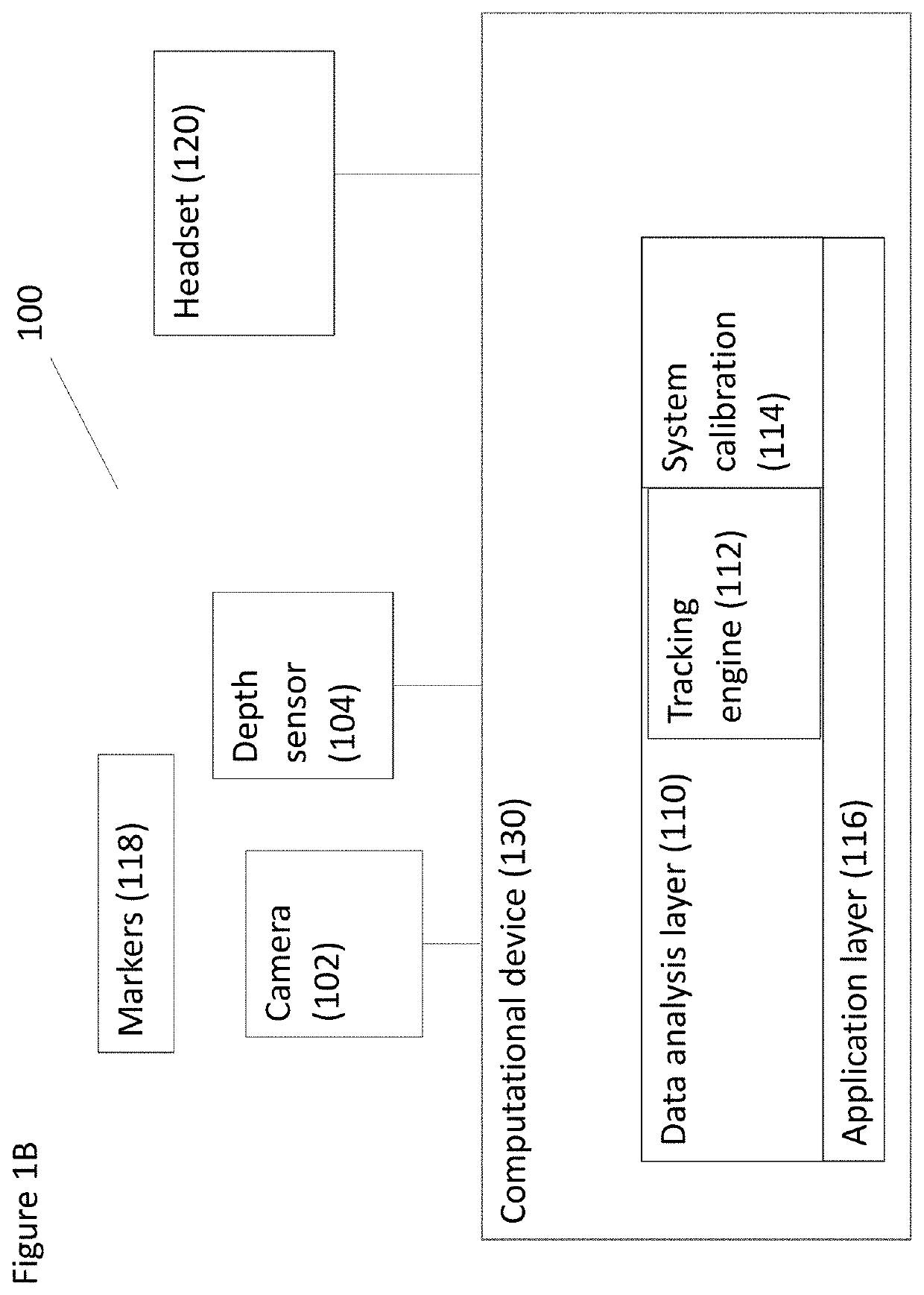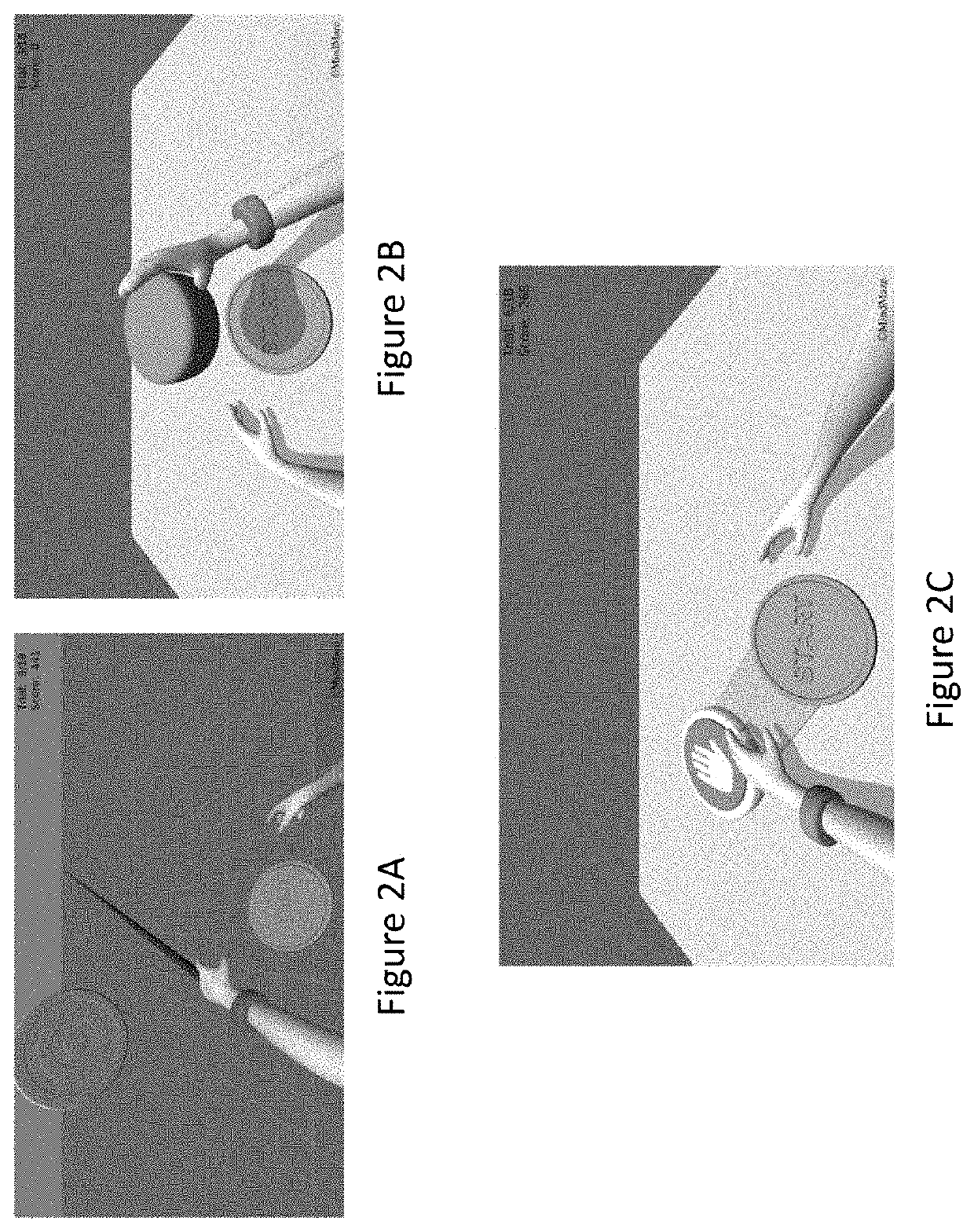System, method and apparatus for treatment of neglect
a system and neglect technology, applied in the field of system, method and apparatus for neglect assessment and treatment, can solve the problems of brain cell death, long-term physical disability and handicap, decrease in movement function, and loss of independence, and achieve the effect of increasing the therapeutic opportunities for patients
- Summary
- Abstract
- Description
- Claims
- Application Information
AI Technical Summary
Benefits of technology
Problems solved by technology
Method used
Image
Examples
example 2
rkers for Virtual Environment Mirrored Feedback
[0132]This Example relates to neural markers associated with the execution and observation of goal-directed movements under mirrored visual feedback in a virtual environment. Electroencephalography (EEG) data of nine healthy participants (22-35 years) is recorded while they perform a reaching task in virtual reality under three visual feedback modes: a) direct mapping: right arm mapped onto the virtual right arm, b) mirror mapping: right arm mapped onto the virtual left arm and c) passive video control: action observation of pre-recorded movements of the virtual left arm.
[0133]Mirror mapping leads to higher negative slow cortical potentials (SCPs) (0.1-1.5 Hz) compared to direct (paired t-test, p3 and C4) is significantly lower in the mirror mapping (p<0.001) and performance of single-trial classification (direct versus mirror) is highest for ipsilateral central electrodes (area under curve: 65±−3%), suggesting an activity shift towards...
example 3
ment and Treatment of Hemispatial Neglect
[0180]The tasks evaluated perception of near space and then perception of far space.
[0181]The setup was constructed according to FIG. 1B, featuring Oculus Rift DK2 and the camera of MindMaze that assures accurate motion tracking.
[0182]The 3D environment and CSV files scripts (C#) were made using Unity 5.2.0 f3 personal.
[0183]Statistics were generated from the CSV files to an Excel sheet using Python 2.7 scripts.
[0184]The participant is seated in front of a real table and the observer has to pay attention that this one is centered with the camera. Markers were attached to the patient as previously described.
[0185]Calibrations were then performed for correct placement of the subject and markers.
[0186]Then, the Oculus is put and adjusted on the participant's head. Depending on the eye characteristic of the participant, one can adjust the distance to the lenses of the Oculus, and the lenses themselves (set A of lens are for people with a quite go...
example 1
ion of Patient Diagnosis in an IVR (Immersive VR) Environment
[0280]Methods: 12 chronic stroke patients (58±9.4 years; 5 female; time from stroke: 15.8±7.7 months) completed a battery of paper-and-pencil neuropsychological tests (bisection, cancellation, reading, drawing, functional scales) and a IVR-based assessment for extra-personal USN (unilateral spatial neglect). In the IVR tasks, participants were presented with a virtual forest environment via head-mounted display (Oculus DK2). The 4-level task consisted of finding static objects (level 1) or moving rabbits (levels 2-4) in the scene, with or without the presence of distractors and an additional auditory dual task to induce a cognitive overload. Participants used the embedded head tracker in the 1-MD (head mounted display) to control a pointer to select the targets in the scene, and the space bar of the computer to validate the selected item.
[0281]Results: Four patients presented USN in both paper-and-pencil and IVR tasks. Int...
PUM
 Login to View More
Login to View More Abstract
Description
Claims
Application Information
 Login to View More
Login to View More - R&D
- Intellectual Property
- Life Sciences
- Materials
- Tech Scout
- Unparalleled Data Quality
- Higher Quality Content
- 60% Fewer Hallucinations
Browse by: Latest US Patents, China's latest patents, Technical Efficacy Thesaurus, Application Domain, Technology Topic, Popular Technical Reports.
© 2025 PatSnap. All rights reserved.Legal|Privacy policy|Modern Slavery Act Transparency Statement|Sitemap|About US| Contact US: help@patsnap.com



